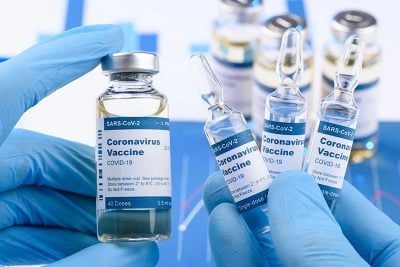British Medical Journal: Pfizer and Moderna’s “95% Effective” Vaccines—Let’s be Cautious and First See the Full Data
Only full transparency and rigorous scrutiny of the data will allow for informed decision making, argues Peter Doshi

The following are excerpts of an important article published by the British Medical Journal. The author Dr Peter Doshi is associate editor of The BMJ.
To read the complete BMJ article click here
In the United States, all eyes are on Pfizer and Moderna. The topline efficacy results from their experimental covid-19 vaccine trials are astounding at first glance. Pfizer says it recorded 170 covid-19 cases (in 44,000 volunteers), with a remarkable split: 162 in the placebo group versus 8 in the vaccine group. Meanwhile Moderna says 95 of 30,000 volunteers in its ongoing trial got covid-19: 90 on placebo versus 5 receiving the vaccine, leading both companies to claim around 95% efficacy.
Let’s put this in perspective.
First, a relative risk reduction is being reported, not absolute risk reduction, which appears to be less than 1%.
Second, these results refer to the trials’ primary endpoint of covid-19 of essentially any severity, and importantly not the vaccine’s ability to save lives, nor the ability to prevent infection, nor the efficacy in important subgroups (e.g. frail elderly). Those still remain unknown.
Third, these results reflect a time point relatively soon after vaccination, and we know nothing about vaccine performance at 3, 6, or 12 months, so cannot compare these efficacy numbers against other vaccines like influenza vaccines (which are judged over a season).
Fourth, children, adolescents, and immunocompromised individuals were largely excluded from the trials, so we still lack any data on these important populations.
I previously argued that the trials are studying the wrong endpoint, and for an urgent need to correct course and study more important endpoints like prevention of severe disease and transmission in high risk people. Yet, despite the existence of regulatory mechanisms for ensuring vaccine access while keeping the authorization bar high (which would allow placebo-controlled trials to continue long enough to answer the important question), it’s hard to avoid the impression that sponsors are claiming victory and wrapping up their trials (Pfizer has already sent trial participants a letter discussing “crossing over” from placebo to vaccine), and the FDA will now be under enormous pressure to rapidly authorize the vaccines.
But as conversation shifts to vaccine distribution, let’s not lose sight of the evidence. Independent scrutiny of the underlying trial data will increase trust and credibility of the results. There also might be important limitations to the trial findings we need to be aware of.
Most crucially, we need data-driven assurances that the studies were not inadvertently unblinded, by which I mean investigators or volunteers could make reasonable guesses as to which group they were in.
Blinding is most important when measuring subjective endpoints like symptomatic covid-19, and differences in post-injection side-effects between vaccine and placebo might have allowed for educated guessing. Past placebo-controlled trials of influenza vaccine were not able to fully maintain blinding of vaccine status, and the recent “half dose” mishap in the Oxford covid-19 vaccine trial was apparently only noticed because of milder-than-expected side-effects. (And that is just one of many concerns with the Oxford trial.)
…
Neither Moderna nor Pfizer have released any samples of written materials provided to patients, so it is unclear what, if any, instructions patients were given regarding the use of medicines to treat side effects following vaccination, but the informed consent form for Johnson and Johnson’s vaccine trial provides such a recommendation:
“Following administration of Ad26.COV2.S, fever, muscle aches and headache appear to be more common in younger adults and can be severe. For this reason, we recommend you take a fever reducer or pain reliever if symptoms appear after receiving the vaccination, or upon your study doctor’s recommendation.”
There may be much more complexity to the “95% effective” announcement than meets the eye—or perhaps not. Only full transparency and rigorous scrutiny of the data will allow for informed decision making. The data must be made public.
To read the complete BMJ article click here
*
Note to readers: please click the share buttons above or below. Forward this article to your email lists. Crosspost on your blog site, internet forums. etc.
Peter Doshi is associate editor of The BMJ.
Featured image source

